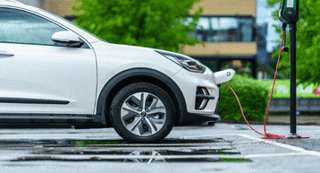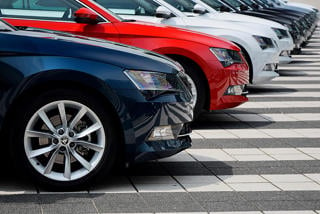Rupert Pontin, director of insight at Cazana
On June 1, car retailers opened their doors for a new chapter in car sales. Nobody knows how long the country will take to return to normal or indeed if there will be a second wave of COVID-19 that will result in further lockdown measures.
What is clear is that for the moment new procedures will be in place that will aim to make it safe for customers to return to the showroom and deal in person once again. At the same time, online purchasing will continue to evolve and give a better purchasing experience for those wary of visiting sites to buy a new or used car.
For the time being, Cazana will continue to provide weekly pricing insight to keep the industry aware of retail driven price movements where traditional data providers are unable to reliably and responsibly do so due to the lack of auction data.
Sales levels in the coming days are expected to increase quite swiftly and there is every possibility that the supply chain will not be able to keep up with wholesale demand for cars and this will pose a problem for some weeks to come. Staff are now back in place with many, but not all, having returned from the isolation of furlough and eager to get back to doing what they love best – selling cars.
From a pricing perspective, the chart below looks at price changes as a percentage for petrol-powered cars week on week from May 26th against May 19th.

(Data powered by Cazana)
Unlike the previous week where retail prices lifted by 2.27%, retail prices for petrol powered cars have shown a minimal increase in pricing of just 0.03%. This is still good news as there have been drops in pricing in just 2 sectors, the largest being -1.34% for the Luxury Car sector which accounts for just 0.23% of all retail advertised cars. However, this drop affects the whole sector average movement.
The biggest increase in pricing has come in the D or Large car sector which at 1.74% represents an increase of £334 per car bringing the average price to £19,202. This is quite a shift for this sector and perhaps suggests a shortage of replacement stock and a good level of consumer enquiry, which are two things that the retailers will see manifest themselves in the coming weeks.
Retail pricing for diesel powered cars has also remained firm, and the overall market uplift in the most recent week has been a minimal 0.1%, but this is still good news as it reinforces the fact that retailers are not dropping prices unnecessarily.

There has been a more varied performance across the diesel fuel type in the last period although the overall market % movement has been most adversely affected by the A Sector Supermini pricing which fell by -0.97%. This market sector is quite volatile having moved upwards by 2.27% in the previous period. The volume of cars is low and therefore shifts can be quite large week on week and the diesel superminis represent just 0.03% of all retail adverts in today’s retail market.
The largest upward move came for the B Small diesel car sector which at 0.43% represents an increase of £31 per car with this sector taking 1.1% of total retail adverts. For diesel powered cars the largest sector is the J or SUV sector which represents 16.9% of total retail adverts. With a drop of -0.31% the average reduction in price per car was £65.
Pricing in the petrol hybrid sector was also positive overall in the last 7-day period as shown below.

The chart shows that all but one market sector in the petrol hybrid category showed an increase in retail pricing. The overall sector move was an increase of 0.39% which is good news generally speaking. Interestingly the largest uplift came in the S or Sports market sector where pricing increased by 0.82% which represents an uplift of £473 per car where the average price is now £57,538. This is off the back of the large jump in pricing for Sports cars between weeks 19 and 20.
The only sector to show a decline was the sparsely populated small car sector that represents 0.46% of total retail adverts which incidentally is almost the same as it was at the start of the lockdown period. Now at an average price of £13,066 the drop in price was just £23 per car.
For the first time in a couple of weeks BEV pricing has shown an overall increase of 0.13% across all the market sectors as shown in the chart below.

There have been two sectors that have recorded a decrease in retail pricing with the largest move of -4.58% coming from the Supermini sector. Accounting for 0.01% of the market this should not be of great concern, but it does affect the headline whole fuel type average movement, and with this sector removed the average price change moves to an increase of 0.42%.
It is also of note that this is the first fuel type that shows an uplift in retail pricing for the J Sector SUV cars. The SUV sector recorded a drop in retail pricing in all other fuel types, and this is therefore an area to watch in the coming weeks. There has long been concern for pricing of this type of car based on the volumes returning to the used car market. It will be interesting to watch retail prices in the coming weeks.
The next chart shows retail pricing movements by fuel type in 2020 compared to what happened in 2019 as it is crucial to understand the difference in pricing trends between a normal market and this year’s COVID affected trading environment.

The chart shows that in the final week before the reopening of the showrooms, retail pricing has increased slightly which is a positive view given the circumstances. It is a different picture to the pricing trend in 2019 where the shift for BEV drew the trendline downwards, although also important to note that for all other fuel types retail pricing changes were similarly low. However, last year’s retail price trend without BEVs was still slightly downwards whereas 2020 is on a positive track.
Now the showrooms are open it will be very interesting to understand what will happen to retail pricing. The use of real-time insight will give retailers the opportunity to identify the slightest change in the market and facilitate the chance to make the most of the opportunities that present themselves. At the moment factual insight is so much more valuable than data based on human decisioning and will give the best chance of a higher return on the available stock.





















Login to comment
Comments
No comments have been made yet.